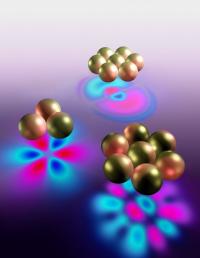Jun 7 2010
A Harvard researcher team has collaborated with scientists from University of Houston, Rice University, and Austin-based University of Texas, to develop new gadgets that offer unparalleled, exotic, and amazing features by chemically constructing nanosphere clusters from a liquid.
 Texas University optical circuits
Texas University optical circuits
The work was performed at the Harvard-based Center for Nanoscale Systems, a member of the National Nanotechnology Infrastructure Network. The researchers have acknowledged the support provided by the Center for Advanced Solar Photophysics, which is a part of the U.S. Department of Energy Frontier Research Center, the National Science Foundation, the Robert A. Welch Foundation, the Air Force Office of Scientific Research, and the U.S. Department of Defense.
The Science, in its May 28 issue, has published the findings of the work, which has demonstrated simple scalable gadgets that are capable of exhibiting customizable optical properties. Such properties are useful for applications that range from invisibility cloaks to sensitive detectors and sensors.
With insulating shell and concentric metallic particles, a self-assembly and bottom-up approach towards the design challenge was devised by Harvard School of Engineering and Applied Sciences’ (SEAS) graduate student Jonathan Fan, in collaboration with Federico Capasso his lead co-author, Robert L. Wallace, a Vinton Hayes Senior Research Fellow in Electrical Engineering at SEAS and Professor of Applied Physics, and Associate Professor of Chemical Engineering and Physics at SEAS, and Harvard Physics Department’s Vinothan Manoharan. They used particles that incorporated concentric insulating and metallic shells to develop a self-assembly, bottom-up technique for meeting the design challenge.
The researcher's self-assembly method only involves a little mixing and drying process. To create the clusters, the particles are initially polymer coated, followed by evaporation of the mixture on to a surface that is water repellant. The particles were packed together during the evaporation process to form small clusters. The researchers then separated the nanoparticles by utilizing polymer spacers and could controllably create a gap of two nanometers between the particles, resulting in much better resolution than the ones permitted by customary top-down techniques,
The resulting optical circuits were of two types, namely materials having negative refractive index and a trimmer that incorporates three equally-spaced particles with the capability to support a magnetic response, an essential characteristic of invisibility cloaks.
Source: http://www.utexas.edu